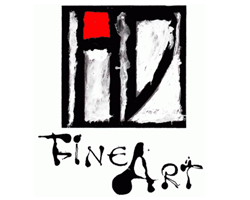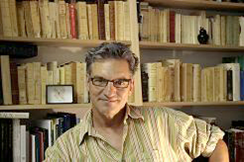Product Description
Paul Beliveau Les humanites CCLXXXIX Hyperrealist painting 2007


PAUL BELIVEAU (1954-) Québec, Canada
“Les humanites CCLXXXIX” 2007
Acrylic on canvas
Signed and dated: Paul Beliveau 2007 (script signature on the back of canvas)
H: 40” x W: 60”
Born in 1954, Paul Béliveau attained his Bachelor’s degree in Visual Arts from Laval University in 1977. Recognized for his expertise in drawing, engraving and painting he has since then had more than sixty solo exhibitions across Canada and the United States. The recipient of numerous prizes in visual arts and of multiple grants from the Canada Council as well as the Ministère des Affaires Culturelles du Québec has taken part in several commitees and juries as specialist in the visual arts. “By openly integrating into the compositions an iconography from the past and proceeding through citation and retrospection, he reveals the phenomenon of metamorphosis upon which imagination itself is based. In this way he brings to light the very principles of the mechanics of creation. Imagination, which consists as it were in the transfer of a perceptible representation onto an image belonging to another reality, thus sees itself in the presented. Consequently it is not the images themselves but the unique process of creative development which accords Paul Béliveau’s works their originality.” (Dany Quine, L’oeuvre du temps)
Paul Beliveau Les humanites CCLXXXIX Hyperrealist painting 2007
You must be logged in to post a comment.
DAVID SIMPSON (1928-) California, US
“Little Ibicenco” – California Hard-Edge Abstract painting 1979
Acrylic on canvas
Marks: David Simpson (script signature) on back of canvas, 1979, #14/79 “Little Ibicenco”, two arrows
H: 29″ x W: 28 3/4″
David Simpson has explored varieties of abstraction since the early 1950s, enjoying acknowledgement and success in the art world. In 1963 he was chosen by New York’s Museum of Modern Art curator, Dorothy Miller, to appear in what turned out to be the last in her legendary series of group shows of contemporary American art. In 1964 he appeared in Clement Greenberg’s famous exhibition Post Painterly Abstraction at Los Angeles County Museum of Art. At that time Simpson painted landscape-derived abstractions and, in the 70s, he practiced a reductive but relational mode of abstraction. But with his discovery of a new acrylic medium in 1987, he was able to embrace finally and successfully the monochrome’s radicality.
Simpson uses an acrylic paint with interference properties. The paint is composed of titanium dioxide electronically coated with mica particles. Simpson tends to mix complementaries, but admits that orange and blue also work together well. He also mixes black acrylic with the interference pigments, finding that a little bit of black helps the colour jump out. Interference pigments cause optical effects that are comparable to iridescence. When you look at the painting from one angle, you receive one set of colour sensations. When you shift your position, you get another. As you move back and forth in front of the canvas – and the paintings make you want to do so – the experience changes. The change of light also dramatically affects the optical experience, and the play of light across the canvas surface is subtly kinetic.
***David Simpson was associated with the California Hard-Edge Movement.
Hard Edge Abstraction:
It encompasses rich solid colors, neatness of surface, and arranged forms all over the canvas. The Hard-edge painting style is related to Geometric abstraction, Post-painterly Abstraction, and Color Field painting. Hard edge is also a simply descriptive term, as applicable to past works as to future artistic production. The term refers to the abrupt transition across “hard edges” from one color area to another color area. Color within “color areas” is generally consistent, that is, homogenous. Hard-edged painting can be both figurative or nonrepresentational.
Important solo exhibitions include: Studio la Città, Verona (2008); Light Wells +, Charlotte Jackson Fine Art, Santa Fe (2007-08); Sonta Roesch Gallery, Houston (2007); Light Wells, Haines Gallery, San Francisco (2007); Iridescent Interference, Gallery Sonja Roesch, Houston (2005); Surrealist Landscape and other Departures, Haines Gallery, San Francisco (2005); Cheryl Haines Gallery, San Francisco (2004); James Kelly Contemporary, Santa Fe (2003); Artotek, Köln (2002); Renate Schröder Galerie, Köln (2002); Renate Schröder Galerie, Köln (2001); Studio la Città, Verona (2001); Modernism Gallery, San Francisco (2001); University Art Museum, San Francisco (2000); Renate Schröder Galerie, Köln (2000); Haines Gallery, San Francisco (2000).
Important group shows include: Galerie Lausberg, Dusseldorf (2007); West Coast Abstraction, Modernism Gallery, San Francisco (2007); Fundamental Abstraction, Haines Gallery, San Francisco (2007); The Panza Collection – An experience in light colour, Albright Knox Gallery, Buffalo, with catalogue (2007); Inneres Leuchten-Farbe als Malerei, Kunstverein Lingen Kunsthalle, Lingen (2005); Recent Paintings, Galleria G7, Bologna (2005); Je ne Regrette Rien, Studio la Città, Verona (2005); The Forman Collection, Albright Knox Gallery, Buffalo (2005); Modernism Gallery, San Francisco (2004); San Jose Museum of Art, San Jose, CA (2004); Albright Knox Art Gallery, N.Y. (2003); La percezione dello spazio , Palazzo della Gran Guardia, Verona (2002); Le stanze dell’arte , MART, Rovereto (curated by Gabriella Belli) (2002); Artisti americani ed europei dalla collezione Panza , Palazzo Ducale, Sassuolo (2001); Nebeneinander III (Painting Today – Overseas and Here ), Galerie Renate Schröder, Köln, with catalogue (2001); La collezione Panza di Biumo: artisti degli anni ’80 – ’90 , Museo del Palazzo Ducale, Gubbio, with catalogue (1997).
JEFFREY HARTMAN USA
“Motobecane” 1978
Oil on canvas
Signed: “Jeffrey Hartman ‘78”, “© 78 HARTMAN” (on the back)
Framed H: 26 1/2” x W: 18 1/2”
Price: $18,000
Belgian art dealer Isy Brachot coined the French word Hyperréalisme, meaning Hyperrealism, as the title of a major exhibition and catalogue at his gallery in Brussels in 1973. The exhibition was dominated by such American Photorealists as Ralph Goings, Chuck Close, Don Eddy, Robert Bechtle and Richard McLean; but it included such influential European artists as Gnoli, Richter, Klapheck and Delcol. Since then, Hyperealisme has been used by European artists and dealers to apply to painters influenced by the Photorealists. However, Hyperrealism is contrasted with the literal approach found in traditional photorealist paintings of the late 20th century. Hyperrealist painters and sculptors use photographic images as a reference source from which to create a more definitive and detailed rendering, one that often, unlike Photorealism, is narrative and emotive in its depictions. Strict Photorealist painters tended to imitate photographic images, omitting or abstracting certain finite detail to maintain a consistent over-all pictorial design. They often omitted human emotion, political value, and narrative elements. Since it evolved from Pop Art, the photorealistic style of painting was uniquely tight, precise, and sharply mechanical with an emphasis on mundane, everyday imagery. Hyperrealism, although photographic in essence, often entails a softer, much more complex focus on the subject depicted, presenting it as a living, tangible object. These objects and scenes in Hyperrealism paintings and sculptures are meticulously detailed to create the illusion of a reality not seen in the original photo. That is not to say they’re surreal, as the illusion is a convincing depiction of (simulated) reality. Textures, surfaces, lighting effects, and shadows appear clearer and more distinct than the reference photo or even the actual subject itself.

Reviews
There are no reviews yet, would you like to submit yours?